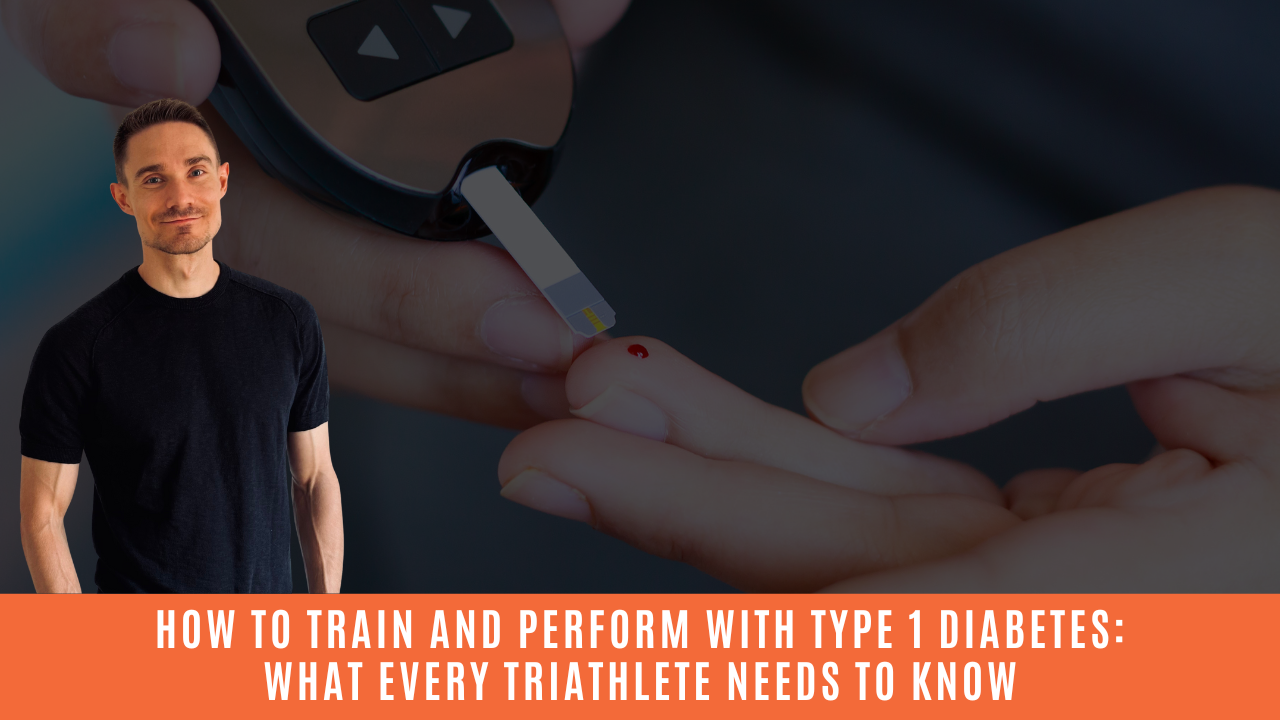How to Train and Perform with Type 1 Diabetes: What Every Triathlete Needs to Know

Training with Type 1 Diabetes? Here's What You Need to Know
For triathletes living with type 1 diabetes (T1D), training isn’t just about nailing swim-bike-run. There’s a fourth leg that adds another layer of complexity: glucose management.
This blog dives into key takeaways from Episode 216 of the Triathlon Nutrition Academy podcast, where Dr Sam Scott – exercise physiologist, researcher and ex-Head of Research for Team Novo Nordisk – shares practical, science-backed insights to help athletes with T1D stay active, stay safe and perform at their best.
Why exercise with T1D is a unique challenge
"Exercise is one of the best things we can do for our health, but for people living with type 1 diabetes, it adds an extra layer of planning and complexity."
If you're an endurance athlete with T1D, you're managing much more than your training program:
- Timing of insulin and meals
- Impact of exercise type, intensity and duration on blood glucose
- Heat, altitude and hormonal fluctuations
- Constant trial and error to find what works
Glucose responses vary so much that even two identical training sessions can have different effects. The goal? Confidence in managing these variables.
Big misconceptions about athletes with diabetes
There’s a lingering myth that people with T1D can’t train fasted or consume high amounts of carbohydrates. In reality:
- Carbohydrate needs are nearly identical to those of athletes without diabetes
- Early under-fuelling is common and problematic
- Fueling during training and events is essential, not optional
According to Dr Scott, high-performing athletes with T1D often use up to 90-100g of carbs per hour, just like their peers.
Key strategies for triathletes with T1D
Dr Scott's practical tips include:
- Individualise everything
- Understand the goal of the session and tailor both insulin and fueling strategies accordingly.
- Use CGMs (Continuous Glucose Monitors)
- These offer live data, trend arrows and retrospective analysis.
- Helps you understand what’s happening in and after training to adjust in real time.
- Build slowly
- You can carb load and race hard, but you need to adapt protocols over time.
- Start with traditional carb loading methods and work with a diabetes educator + sports dietitian to make it work.
- Aim for range, not perfection
- Target a glucose range of 7 to 12 mmol/L before starting exercise.
- Avoid framing levels as "good" or "bad" – consistency matters more.
- Don’t let diabetes limit your goals
- With smart strategy and support, athletes with T1D can perform at the highest level.
The future of diabetes tech in endurance sport
Dr Scott is now CEO of Enhanced, a platform that merges glucose, insulin, wearable and nutrition data into one interface. Using AI-powered insights, it helps athletes make better, faster decisions about fuelling and recovery.
"The goal is to reduce the decision-making burden and help people focus on their sport."
Final thoughts: Yes, you can do hard things
Living and training with type 1 diabetes is no small feat. But it can also make you a more resilient, tuned-in athlete.
"Sport represents possibility. If you can manage sport, you can manage anything." – Dr Sam Scott
Next steps
If you're a triathlete managing type 1 diabetes:
- Grab a copy of The Science of Exercise with Type 1 Diabetes
- Check out Enhanced for data-driven support
- Download the Triathlon Nutrition Checklist to see where your fuelling and recovery stack up
- Explore more blogs on carbohydrate loading, tech in sport and race day fuelling
Want help building a strategy that supports your training, performance and health? Learn more about working with us at dietitianapproved.com


